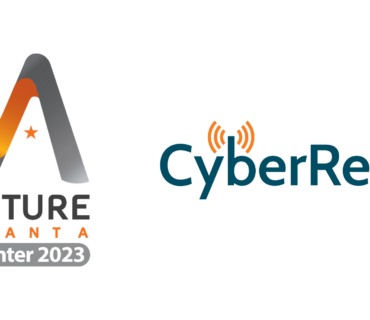Top 7 Cybersecurity Issues of 2018
Global annual cybercrime costs are expected to increase to $6 trillion by 2021, with cloud-based ransomware attacks and large-scale breaches or consumer data growing globally. Here are several dominant security threats that businesses should be ready for now.
Last year millions of businesses and consumers were affected by some of the biggest cyberthreats in history. From the massive Uber breach to Equifax’s stunningly vast toll due to stolen data from nearly half the U.S. population, the current threat landscape has cybersecurity experts concerned about several dominant security threats that businesses should be ready for.
A recent Cybersecurity Ventures report predicts that global annual cybercrime costs will grow to $6 trillion annually by 2021. According to the report, in the next several years the attacks will only grow in magnitude, incurring costs from the following:
- Data destruction/damage
- Stolen money, embezzlement, and fraud
- Lost productivity
- Intellectual property theft
- Personal and financial data theft
- Post-attack disruption to the business
- Forensic investigation
- Restoration and deletion of hacked data and systems
- Repair reputational harm
It’s no wonder then, that the beginning of 2018 was rife with expert predictions of the many cyberthreats we’ll see in 2018. Here are the top most anticipated cyberthreats we should look out for.
Massive Data Breaches Will Continue
If last year’s cyberattacks resulting in the theft of sensitive information like birth dates and Social Security numbers from millions of consumers are any indication, we should anticipate more massive data breaches affecting large companies. The 2017 breaches are “a stark reminder that hackers are thinking big when it comes to targets,” writes Martin Giles, the San Francisco bureau chief of MIT Technology Review.
Ransomware Attacks Targeting the Cloud
Ransomware, which is malware that uses encryption to lock down computer files, is a popular hacker weapon because of its relative simplicity, and because of its lucrativeness (charging money, often demanded in the form of hard-to-trace cryptocurrency, to unlock hostage data. New strains multiply quickly, and often, too. Some particularly vicious strains, such as WannaCry, NotPetya, and Bad Rabbit, wreaked havoc last year, compromising hundreds of thousands of computers and impacting businesses big and small across many industries. Maersk and FedEx, for instance, reported millions of dollars in damage due to the NotPetya ransomware attacks in 2017.
Although ransomware attacks have proved to cause damage across many industries, this year’s prediction focuses on cloud-computing businesses, including those that offer consumer services like photo libraries. The biggest cloud players in the world (Amazon, Google, etc.) aren’t easy to hack due to their top-notch digital security measures put firmly in place. This leaves smaller companies with fewer resources more vulnerable to those kinds of attacks.
AI Technology Falling into the Wrong Hands
Artificial Intelligence (AI) technology can be implemented to detect, track, and monitor cyberthreats, providing an automatic assessment of computer systems while learning the patterns of cyberattacks, in order to protect IT infrastructure through more agile cyber defense adaptations to threats. Using AI-powered systems to supplement human power can be very useful in IT security. However, many believe that, in the wrong hands, machine-learning technologies could be a double-edged sword — in the sense that hackers are probably using the same tools for their purposes. Examples include phishing taking more sophisticated forms, and malware becoming better equipped to bypass sandboxing software programs designed to detect it.
Increased Attacks on IoT Devices
With the latest proliferation of connected devices, objects, applications, and systems that we’re using every day, including wearable and virtual-reality devices, comes the threat of cyberattacks that specifically target IoT devices. IoT is a high risk due to the lack of security by design, such as inadequate security settings.
Infrastructure As Targets
Cybersecurity experts predict more attacks on critical infrastructure on a global scale, with hackers targeting transportation systems, electrical grids, healthcare facilities, and more, finding ways to crack through the defenses of the older and therefore more vulnerable systems.
Cryptocurrency Mining
Theft of cryptocurrency like Bitcoin will continue, as will the theft of computer processing power required to mine cryptocurrency. If the value of cryptocurrency increases, hackers will use vast numbers of computer networks to target those involved in the business of cryptocurrencies.
Increase of Mobile Threats
Malware specifically designed to target mobile devices is often spread through compromised apps, and cybercriminals will keep looking for new tools and resources to infect mobile devices worldwide. The Mobile Security Index 2018 report has found that:
“– Companies are sacrificing mobile security for expediency and business performance. And those that said they knew their organization did this were more than twice as likely to have experienced data loss or downtime (45% compared to 19%).
— Almost all respondents (93%) agreed that mobile devices present a serious and growing security threat.
— Despite this, many were failing to take basic precautions. Only 39% said they change all default passwords and over half (51%) didn’t have a public Wi-Fi policy.
— Most know they need to take more action. 93% agreed that organizations should take mobile security more seriously.”
Managing Cybersecurity Risks
As all these issues continue to be of concern, there’s also an amplified call to regulate (and toughen) breach disclosure rules in the U.S. For any business, large or small, the stakes are also higher in terms of the impact these threats might have on everything from the business’ reputation to its profitability.
So, how can businesses protect themselves from the anticipated security threats? The solution is to evolve with the threats and provide multiple layers of protection to prepare for the unexpected and high-impact security risks. This means taking advantage of the emerging trends in cybersecurity technology and implementing a clear, effective cybersecurity strategy with strict security protocols and robust antivirus software, with all the necessary safeguards in place to secure networks.
For more information about cybersecurity and data protection please contact the experts at CyberReef today.







